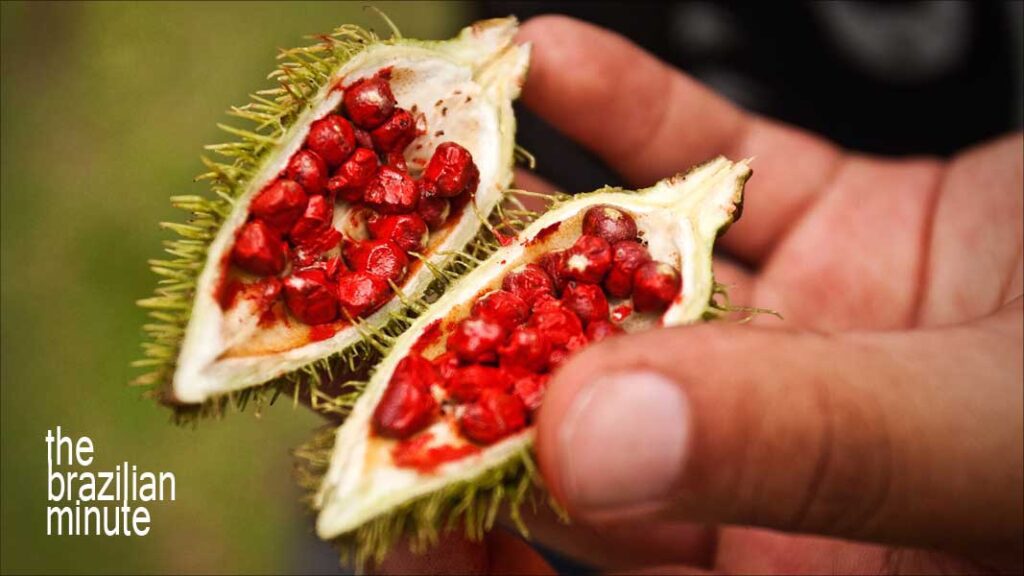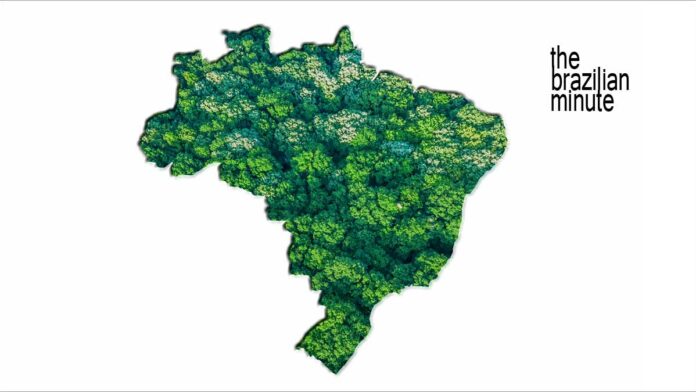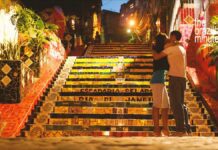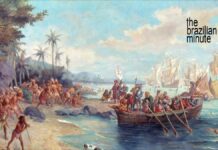Brazil is the World’s fifth-largest nation and home to 130,000 living species of flora and fauna.
Brazil’s Geography and Biodiversity play complementary roles.
This series was presented by the Consulate-General of Brazil in Chicago and the Brazilian Foreign Ministry’s Cultural Department.
In celebration of Brazil’s Bicentennial year, 1822 – 2022
This week’s Brazilian Minute: Brazil’s Geography and Biodiversity
Catch up with other Brazilian Minute episodes you may have missed!
Script from Audio:
It’s true. Brazil is a geographic masterpiece. The world’s largest rainforest, the greatest river, the most impressive waterfall and over four and a half thousand miles of the most beautiful coastline to be found anywhere.
Brazil is South America’s largest country, bigger than the continental United States, and twice as big as the European Union. Brazil is the 5th largest nation on our planet.
When it comes to Biodiversity, Brazil is a world leader. Within its borders are more than 130,000 living species of flora and fauna, The Amazon Rainforest accounts for more than 10% of all species worldwide.
Brazil’s biodiversity is important for health and wellness. Some call it “the world’s medicine cabinet”. About 25% of all modern drugs come from Rainforest plants.
Read and listen to new weekly episodes of The Brazilian Minute.

More on: Brazil’s Geography and Biodiversity
Geographic Overview:
Brazil is the largest country in South America and the fifth-largest nation in the world.
Federative Republic of Brazil
- MOTTO: “Ordem e Progresso” (Order and Progress)
- FORM OF GOVERNMENT: Democratic Federal Republic
- CAPITAL: Brasilia
- LARGEST CITY: São Paulo (12.4 million)
- POPULATION: 208,846,892
- NATIONAL LANGUAGE: Portuguese
- CURRENCY: Brazilian Real
- AREA: 3,286,470 square miles (8,511,965 square kilometers)
- MOUNTAIN RANGES: Serra do Espinhaço, Serra do Mar
- MAJOR RIVERS: Amazon, São Francisco, Paraná, Tocantins
River Nation
Did you know that nearly two-thirds of Brazil holds two of the largest river basins in our hemisphere? They are the Amazon River and the Bacia do Prata (La Plata River Basin). Both are so large that they are easily be seen from space.
The mouth of the Amazon is located about 180 miles north of the city of Belém, near the city of Macapá. It carries 58 million gallons of freshwater into the Atlantic Ocean every second.
We know that the Amazon is not just a single large river. Actually, several hundred smaller rivers and tributaries join the Amazon River along its 4,000-mile length.
Thousands of species thrive in the river’s ecosystem. Two of the best-known are the intimidating piranha and the playful boto, or pink river dolphin.
Longest Border In the Western Hemisphere
Brazil shares its border with every country in South America but Ecuador and Chile. At nearly 10.5 thousand miles, Brazil’s border ranks as the world’s third longest, following China and Russia.
Within this vast area, you’ll find dense green forests. The world’s largest jungle is the Amazon rainforest. It occupies the far northern region of Brazil.
But there are also dry grasslands, mountain ranges, and rugged hills. Hike through vast pine forests. Fly over Brazil’s horizon-stretching plateaus and its long coastal plain.
The Pantanal
To the south, the biologically diverse wetlands of the Pantanal are situated along Brazil’s western border with Bolivia and Paraguay. Covering an area of 54,000–62,000 square miles, The Pantanal is the largest natural wetlands in the world.
It is also a natural habitat for flora and fauna that’s unrivaled.
According to the state-owned Brazilian Agricultural Research Corporation, the Pantanal ecosystem holds thousands of plant species and flowers. Thousands of mammal, reptile, bird, and fish species flourish there, too.
Amazingly, 9,000 subspecies of invertebrates are already classified. One, the apple snail, has both gills and lungs which allow it to adapt to changing weather conditions throughout the year.
Brazil’s Flora and Fauna
Fun fact: Did you know that Brazil has the greatest variety of animal life anywhere in the world?
Impressively, more than 1,600 bird species, 1,500 fish species, and 600 mammal species live in Brazil. So do 100,000 different kinds of insects and 130,000 kinds of plant life.
The Pantanal is the natural domain of giant anacondas, an oversized cousin to guinea pigs called capybaras, and fierce South American alligators called caimans.
Brazil is the world’s most biologically diverse country. As a matter of fact, Brazil ranks at the top among the world’s 17 megadiverse countries.
Brazil’s two leading biodiversity hotspots are located in the Atlantic Forest and the Cerrado. Additionally, there are six terrestrial biomes and three marine ecosystems. Because of this, Brazil ranks directly behind Indonesia for species richness or ‘endemism’.
Impressively, 70% of Earth’s animal and plant species are found in Brazil. Even more impressive is the fact that Brazil’s biosystem continues to grow. It is said that an average of 700 new plant and animal species are discovered each year.
Brazil For The World
Biodiversity plays an important role in our daily lives. Conservation and management of flora and fauna, plus the land they call home is equally important.
The Convention on Biological Diversity has recognized Brazil’s role.
“Represented by more than 200 indigenous peoples and 170 languages, Brazil is megadiverse from a cultural perspective as well. This large number of local communities and villages possesses considerable knowledge on flora and fauna species, including on the traditional management systems for these natural resources. The contribution of these communities is therefore fundamental for the conservation and sustainable use of the country’s genetic and biological resources.”
Music, Travel, Friends, and Fun! 2022 marks Connect Brazil’s 25th year.
Brazil’s Geography and Biodiversity
Did you enjoy ’Brazil’s Geography and Biodiversity? If you did, why not join us at Connect Brazil?
Sign up for our emails on Brazilian music, travel, friends, and fun. Listen to our ‘always live’ streaming station and streaming music channels, always free. Visit us on Facebook, and Twitter, and browse our Lifestyle Directory for Brazilian events coast to coast.









